Different types of grass in india, Grasses are a significant component of Indian landscapes, known for their adaptability to various climates, durability, and low-maintenance nature. The types of grass found in India can vary from warm-season varieties, which thrive in hot conditions, to cool-season varieties that perform better in cooler temperatures. Each grass type has unique characteristics and specific care requirements, making it essential to understand which varieties are best suited for different purposes and environments. Here, we explore some popular grass types in India—Zoysia, Centipede, St. Augustine, Bermuda, Perennial Ryegrass, Tall Fescue, Buffalo, and Cynodon grass—covering aspects of their growth, care, ideal planting locations, and benefits.
1. Zoysia Grass (Zoysia spp.)
Zoysia is a warm-season grass popular in India for its dense, carpet-like appearance and resilience. It has narrow, fine leaves that create a soft, green turf with a slightly spiky texture.
How to Grow Zoysia Grass
Zoysia grass can be grown from seed, sod, or plugs, but it takes time to establish. Seedlings require warm soil temperatures for germination, ideally above 20°C. This grass thrives in well-drained soils, requiring ample sunlight for optimum growth.
How to Care for Zoysia Grass
Zoysia is drought-resistant and requires minimal watering once established. Mowing is required every two weeks to maintain a uniform look, as it has a slow growth rate. Zoysia may benefit from periodic fertilization but requires minimal pest control.
Where to Plant Zoysia Grass
It performs well in full sun but can tolerate partial shade, making it suitable for residential lawns, golf courses, and public parks. It’s particularly suited for regions with warm climates.
Benefits of Zoysia Grass
Zoysia’s dense growth prevents weed invasion and requires less mowing. It’s ideal for landscapes where low maintenance is desired, and it helps conserve water due to its drought tolerance.
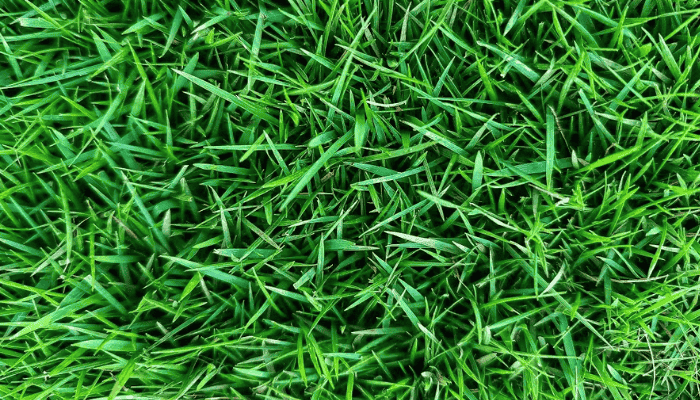
2. Centipede Grass (Eremochloa ophiuroides)
Centipede grass, a warm-season grass, is characterized by its light green color and coarse texture. It grows well in acidic soils and is known as a “lazy man’s grass” due to its low maintenance requirements.
How to Grow Centipede Grass
It is typically grown from seed or sod, though it can also be propagated by sprigging. It grows best in warm climates with acidic, sandy soils and requires minimal fertilization. Plant it during late spring or early summer when temperatures are warm.
How to Care for Centipede Grass
Centipede grass requires little watering and fertilization but needs regular mowing. It is more susceptible to iron deficiencies, so periodic iron supplements can help maintain its green color.
Where to Plant Centipede Grass
This grass is ideal for low-maintenance areas such as residential lawns, golf course roughs, and utility areas. It’s particularly suited for regions with sandy, acidic soils and warm climates.
Benefits of Centipede Grass
Centipede grass grows low and slow, making it ideal for people who prefer low-maintenance lawns. It has a moderate drought tolerance, reducing the need for constant watering.
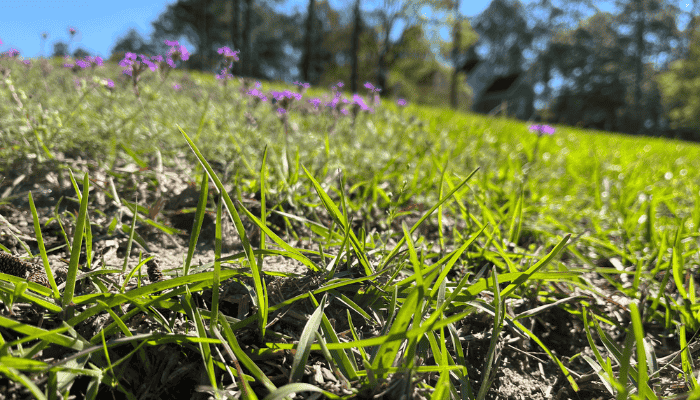
3. St. Augustine Grass (Stenotaphrum secundatum)
St. Augustine grass is known for its broad, coarse leaves and deep blue-green color. This warm-season grass is shade-tolerant, making it suitable for partially shaded lawns.
How to Grow St. Augustine Grass
It can be propagated using sod or plugs as seeds are rarely used. Planting should be done in spring, where it receives moderate to full sunlight. It performs best in sandy soils with good drainage.
How to Care for St. Augustine Grass
It requires regular mowing and watering, especially in dry conditions. Fertilization is recommended in spring and fall to maintain its lush appearance. St. Augustine is prone to pest attacks and may need occasional treatment.
Where to Plant St. Augustine Grass
This grass is best suited for shaded residential areas, coastal regions, and places where salt-tolerant vegetation is necessary. It’s popular in parks, playgrounds, and golf course fairways.
Benefits of St. Augustine Grass
Its tolerance to shade and salt makes it ideal for coastal regions. St. Augustine creates a dense lawn, which helps reduce erosion and minimize weed growth.
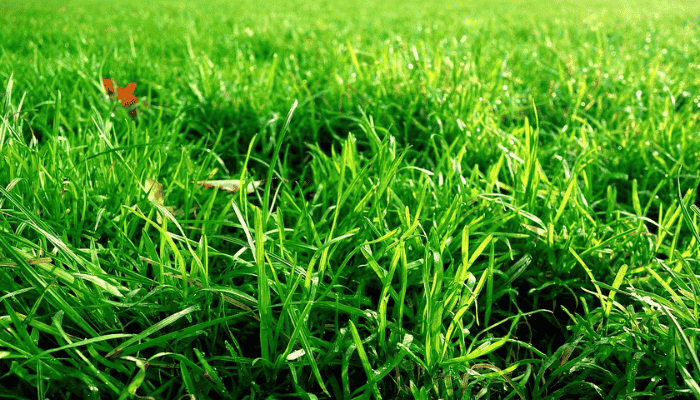
4. Bermuda Grass (Cynodon dactylon)
Bermuda grass is one of the most common warm-season grasses in India, known for its fine texture and hardy nature. It is a fast-growing grass that can withstand heavy traffic.
How to Grow Bermuda Grass
Bermuda grass can be grown from seeds, sod, or plugs. It requires warm soil temperatures for optimal growth and prefers full sunlight. It can adapt to various soil types, although it thrives in well-drained soils.
How to Care for Bermuda Grass
This grass requires frequent mowing due to its rapid growth and benefits from fertilization every six weeks during the growing season. Bermuda grass is drought-resistant but performs best with moderate watering.
Where to Plant Bermuda Grass
It is highly versatile and can be used in sports fields, golf courses, and residential lawns. It’s suitable for areas with heavy foot traffic, such as playgrounds and athletic fields.
Benefits of Bermuda Grass
Bermuda grass is durable, tolerating high traffic and extreme heat. It is ideal for sports grounds due to its resilience and provides a visually appealing, thick ground cover.

5. Perennial Ryegrass (Lolium perenne)
Perennial ryegrass is a cool-season grass known for its quick germination and bright green color. It is often used as a temporary winter grass in India to keep lawns green.
How to Grow Perennial Ryegrass
Ryegrass seeds germinate quickly, often within a week. It grows best in cool temperatures and requires well-drained soil. Autumn is the ideal time for planting.
How to Care for Perennial Ryegrass
Ryegrass needs regular watering and mowing to maintain its appearance. Fertilize in early spring and late autumn for best results. It may require pest control measures as it is vulnerable to diseases.
Where to Plant Perennial Ryegrass
This grass is best for cooler climates and is often used in high-traffic areas like sports fields and parks. It’s commonly used to overseed lawns in winter to maintain greenery.
Benefits of Perennial Ryegrass
Its rapid germination makes it an excellent choice for erosion control and temporary lawns. It provides a lush, vibrant green cover in cooler months, making it ideal for seasonal landscapes.
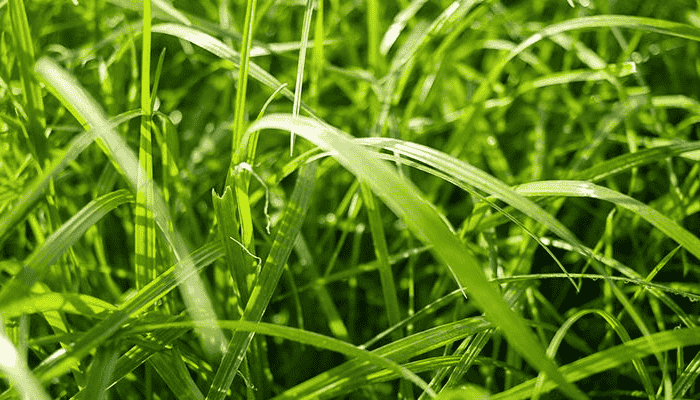
6. Tall Fescue (Festuca arundinacea)
Tall fescue is a cool-season grass recognized for its deep green color and clumping growth pattern. It is tolerant of shade and resistant to cold and drought.
How to Grow Tall Fescue
It’s best grown from seed and performs well in areas with moist, well-drained soils. Autumn is an ideal time for sowing as it thrives in cooler temperatures.
How to Care for Tall Fescue
Tall fescue requires moderate watering and periodic mowing. Fertilization during fall and spring can enhance its growth. It typically shows strong resistance to pests and diseases.
Where to Plant Tall Fescue
This grass is suitable for lawns in cooler climates, especially in shaded areas. It’s commonly used in public parks, residential lawns, and golf course roughs.
Benefits of Tall Fescue
Tall fescue has deep roots, which improve its drought tolerance and help with soil stabilization. It is also shade-tolerant, providing greenery in partially shaded areas.

7. Buffalo Grass (Bouteloua dactyloides)
Buffalo grass is a warm-season, native grass known for its low-growing, fine-textured blades. It is highly drought-resistant and requires minimal maintenance.
How to Grow Buffalo Grass
Buffalo grass is usually established from sod or plugs as it spreads slowly. It performs best in sunny, dry areas with well-drained soil and low fertility.
How to Care for Buffalo Grass
This grass requires minimal watering and fertilization, but periodic mowing keeps it looking neat. Buffalo grass can be left unmowed for a natural look.
Where to Plant Buffalo Grass
It is suited to arid and semi-arid regions, making it ideal for low-maintenance lawns and xeriscaping in drought-prone areas.
Benefits of Buffalo Grass
Buffalo grass conserves water, making it eco-friendly. It also prevents soil erosion and provides a soft, durable cover that requires little maintenance.
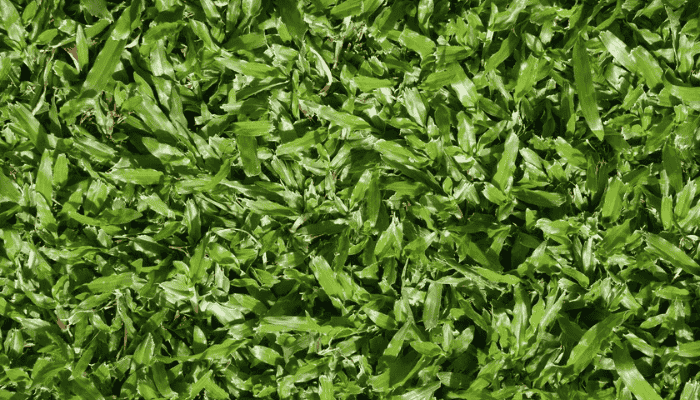
8. Cynodon Grass (Cynodon spp.)
Cynodon grass, also known as “Doob” or “Durva” grass, is a hardy grass species popular in India for its adaptability. It has fine, wiry leaves and forms a dense mat.
How to Grow Cynodon Grass
It can be grown from seed, sod, or sprigs and establishes quickly in warm climates. It tolerates various soil types but prefers sandy, well-drained soils.
How to Care for Cynodon Grass
Cynodon grass requires frequent watering during the establishment phase but becomes drought-tolerant. Mowing every two weeks and occasional fertilization are beneficial.
Where to Plant Cynodon Grass
It is commonly used for lawns, parks, and sports fields due to its durability. Cynodon grass thrives in sunny areas with moderate to heavy foot traffic.
Benefits of Cynodon Grass
This grass helps prevent soil erosion, stabilizes dust-prone areas, and requires minimal maintenance once established. It’s an excellent choice for regions with hot, dry climates.
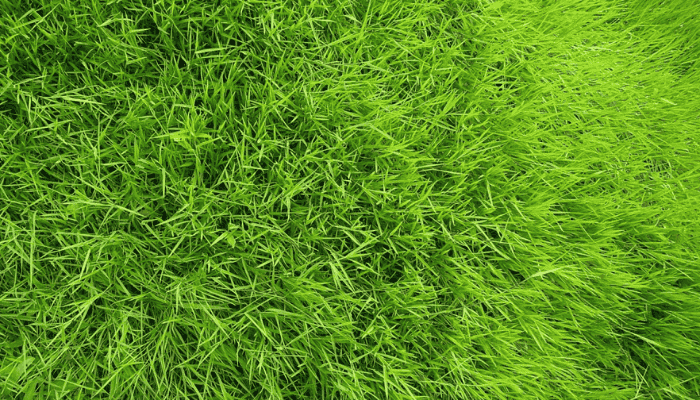
Conclusion
India’s diverse climate supports a variety of grass species, each suited to different regions, soil types, and uses. Across landscapes from lush lawns to fields and forests, grasses in India contribute significantly to ecosystems by preventing soil erosion, promoting biodiversity, and enhancing water retention. Some grasses thrive in hot, dry areas, while others are best adapted to humid, temperate zones or coastal areas. This adaptability makes grasses versatile for residential lawns, sports fields, and agricultural applications.
Furthermore, Indian grasses play essential roles beyond aesthetics, including in traditional medicine, fodder for livestock, and construction. Many native species are resilient, requiring minimal water and care, making them sustainable choices for landscaping and agriculture. They also help combat climate issues, as they can reduce dust and improve air quality, which is crucial for urban environments. Ultimately, India’s grass diversity underpins ecological stability, cultural practices, and economic value, supporting both natural and human-made environments across the country.


